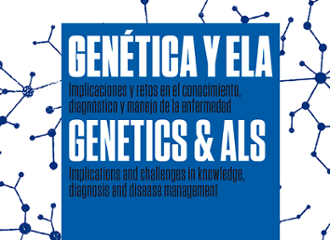Research projects
Start of main content
Deciphering unfolded protein response and its immune suppressive role in high grade B cell lymphomas
22st national competition for scientific and technical research
Personalized therapy, immunotherapy and cancer
Senior Researcher : Ana Ortega Molina
Research Centre or Institution : Facultad de Ciencias. Universidad Autónoma de Madrid
Abstract
D
iffuse large B-cell lymphoma (DLBCL) is the most common malignant lymphoid neoplasm in adults and represents a heterogeneous group of tumors with distinct subtypes that differ in genetic alterations, clinical outcomes, treatment responses, and prognosis. Approximately 5-15% of DLBCL cases are high-grade B-cell lymphomas with MYC and BCL2 rearrangements, known as double-hit lymphomas (HGBCL-DH-BCL2). Due to the simultaneous activation of these key oncogenes, HGBCL-DH-BCL2 is among the most aggressive and chemotherapy-resistant lymphoma subtypes, with limited treatment options and a poor prognosis.
Based on transcriptomic analyses conducted in our lab, these aggressive lymphomas show increased unfolded protein response (UPR) activity, along with reduced expression of immune and inflammatory signatures, suggesting a decreased reliance on the microenvironment.
Studying the unique biology of these tumors in relation to UPR, the inflammatory microenvironment, and antigen presentation regulation, using patient samples and preclinical disease models, could provide a rational foundation for exploring targeted agents in combination with immunotherapies that enhance tumor recognition and elimination.
Our study aims to provide a better understanding of the dysregulated UPR signaling in this lymphoma type, as well as potential new strategies for treating these aggressive B-cell lymphomas that have a very unfavorable prognosis with standard therapies.
-
 Activities related
Activities related
-
 Projects related
Projects related
-
 News related
News related
-
 Publications related
Publications related
 Activities related
Activities related
-
26
Jun
2024
Conferencias La aventura de la ciencia Madrid, Miércoles 26 de junio de 2024, 19:00 horas
-
13
Feb
2025
17th edition. Cycle of conferences and debates in science Digital Twins: Technological Advances and Application Opportunities Madrid, Thursday, 13 February 2025, 17:30 hours
-
18
Feb
2025
Session New Therapies for the Inflammation Treatment Madrid, Feb 18th, 2025, Tuesday. 4PM
 Projects related
Projects related
- Development and Application of saRNAs for the Treatment of Rare Monogenic Diseases 2024 Senior Researcher : María Luisa Cayuela Fuentes
- CHANNELOSOME RESCUING PEPTIDES IN THE TREATMENT OF ARRHYTHMIAS IN INHERITABLE HEART DISEASES 2024 Senior Researcher : José Jalife Research Centre or Institution : Centro Nacional de Investigaciones Cardiovasculares (CNIC). Madrid
- Mechanisms for sustaining mitochondrial genome integrity and function during hematopoiesis. 2024 Senior Researcher : Ana Victoria Lechuga Vieco Research Centre or Institution : Fundació Clínic per a la Recerca Biomèdica. Hospital Clínic. Barcelona
 News related
News related
 Publications related
Publications related


End of main content



